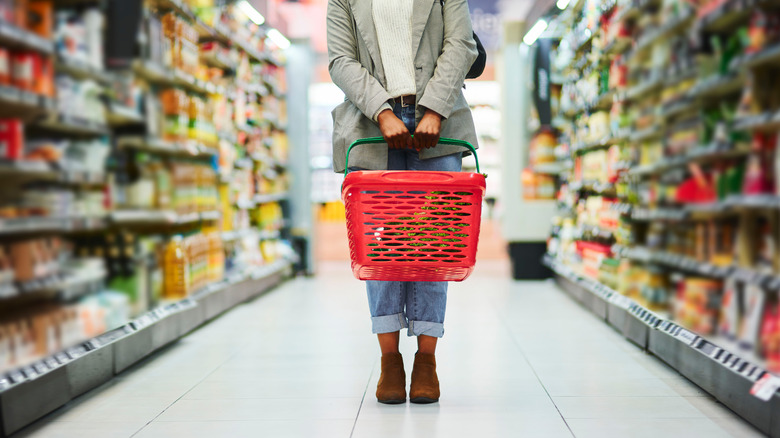People Are Buying Less Groceries Even As Inflation Slows
Over the past few years, rising inflation has required everyone to tighten their wallets and spend less on "non-essentials." While food will always remain at the top of our priorities list, consumer trends have shown that shoppers have opted to spend less and less during their weekly grocery runs. In the summer of 2022, food inflation was the worst in 40 years. According to Forbes, food inflation hit its highest peak last September, reaching a 14.3% increase in online grocery prices compared to the year prior.
Thankfully, we have some good news: Inflation is showing signs of slowing down. The Council of Economic Advisors shared that the prices of groceries have decreased slightly in the past few months, but most households have yet to see significant savings. Instead of waiting and hoping for prices on certain items to drop, shoppers have taken their budgets into their own hands and made serious changes to their shopping habits to combat volatile prices.
Per Fortune, chief executive officer of Conagra Brands Sean Connolly assessed that consumers are buying fewer groceries to save a few dollars. He claimed that shoppers are unwilling to "[trade] down" to cheaper brands for their pantry essentials and, instead, have chosen to buy less food overall. Today, many consumers prioritize spending money on post-pandemic activities, travel, and experiences rather than filling fridges with high-priced foods.
With inflation in flux, consumers are relying on specific foods
Inflation continues to change America's eating habits, but people's appetites have not changed. Consumers are not eating less because of tighter budgets: The foods they are reaching for have indicated specific priority shifts. Many have opted to buy in bulk or forego high-priced organic products to save a few bucks, but a majority of shoppers have chosen to rely on the convenience of frozen foods to keep their families fed.
An Acosta food and insights study found that frozen food sales were up 7.6% in 2022, even when prices of frozen goods increased. 98% of households have stocked their freezer with everything from pre-packaged dinners to microwavable vegetables. To cut costs, consumers are investing in frozen foods because of their extended expiration date and no-mess prep. Frozen food items allow consumers to purchase essentials at a lower cost, prepare meals with fewer ingredients, and reduce waste. When food prices are high — and people are hungry — frozen goods provide one of the best cost-effective options.
Even as the inflation rate shows signs of slowing down, it may take a long time for consumers to experience any significant financial relief when they check out at the local grocery store. Until then, shoppers continue to adapt and consume smarter, not harder.

